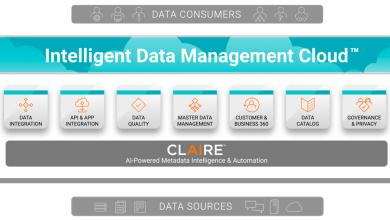
In the age of digital transformation, where organisations seek scalability, security, competitive advantage, and much more, relying solely on private data centres for organisational operations is hardly an option. As a result, an increasing number of organisations (80 per cent as per Flexera 2022 State of the Cloud Report) have reported their cloud spending exceeds 1.2 million USD per year. As more and more business entities rush to move their data, workloads, and business-pivotal applications to the public cloud, there are underlying challenges which need to be addressed.
Key Considerations as You Move Workloads to Public Cloud
- Moving to public cloud does not come without potential cybersecurity and data protection implications. These must be thought through carefully.
- Even though capital expenditure can shrink or even be eliminated, it’s important to have an understanding of the operating expenses you will incur.
- In contrast to private data centre infrastructure, cloud resources operate differently and therefore need highly advanced and flexible management and automation tools.
Whilst public cloud promises elasticity of resources, you need to be sure you understand how to configure your resources to scale up and down efficiently as required. You cannot take cloud availability and resilience for granted. It’s important you understand the uptime SLAs your provider offers and augment them to meet your needs.

Choosing a cloud provider and augmenting their technology to meet your business needs ensures you address these key considerations.
It’s important to choose a cloud platform that can integrate with third-party technologies to provide flexible, scalable and long-term hybrid cloud solutions for IT operations. Red Hat Enterprise Linux (RHEL) and Microsoft Azure have deep and proven integration that delivers cloud environments for organisations to ensure their workloads, applications and business-critical operations function at the optimum level.
Cloud Migration Made Easy with Expertise and Support:
Microsoft is a member of the Red Hat Certified Cloud and Service Provider (CCSP) program, ensuring engineers from both entities can integrate RHEL and Microsoft Azure to provide a seamless and powerful platform for cloud services. Microsoft and Red Hat have done the “heavy lifting” so that your staff don’t have new learning curves, they can use their contemporary skills to deploy workloads and applications on the cloud.
What does this collaboration deliver?
Integrated Security: To meet security challenges, RHEL provides layered security technologies and certifications in tandem with Microsoft Azure. Native security features, including Security-Enhanced Linux (SELinux) and Mandatory Access Controls (MACs), guarantee strict control of data and centralise authentication management.
Security management and threat protection incorporated with Microsoft Azure can be activated on Red Hat Enterprise Linux, providing native behavioural analytics and machine learning to detect attacks and zero-day vulnerabilities. Cyber engineers from both companies work together with customers, partners and the open source community to identify and fix vulnerabilities.
Reduced Costs: Through the Red Hat Cloud Program, unused or existing Red Hat subscriptions can be used across the entire IT architecture or moved to Microsoft Azure. Profound visibility of resource cost and consumption is possible through Azure’s modern monitoring tools that collect cloud use and billing data. Automated alerts, showback and chargeback reports also assist in tracking business expenses.
Cloud Management: Open source applications, templates, frameworks, single and multiple virtual machine images, and other management and automation services allow organisations to handle cloud resources as per their need and feasibility. While RHEL offers exceptional management experience based on simple web interfaces, compliance monitoring, and update and patch management, Microsoft Azure enables customers to produce, assign, and manage policy definitions for smooth governance and manageability.

Augment Workload Performance: Used in the world’s top 10 supercomputers, RHEL is well-known for its robust performance across virtual, bare-metal, container, and cloud environments. Microsoft Azure, on the other hand, offers highly modern and substantial resources to support compute and graphics-intensive workloads that can accommodate any business-critical applications and operations, including high-performance computing (HPC) and batch processing, artificial intelligence and visualisation. It also enables organisations to smoothly distribute workloads to thousands of virtual machines (VMs). In simple words, the robust technologies and computing powers associated with both companies allow organisations to deploy and run their workloads, mission-critical apps and other organisational operations faster.
Assured Availability and Reliability: RHEL releases are extensively tested for quality assurance which allows them to provide more than 99.99 per cent uptime for vital workloads. Likewise, Microsoft guarantees continuous availability, reliability, and fault tolerance. In addition, Red Hat and Microsoft combinedly test and validate the stability and viability of RHEL on Microsoft Azure.
Furthermore, the SQL server on Red Hat Enterprise Linux provides organisations with more database flexibility, protection and performance as it reduces resource use by 30 per cent and maintenance time by 60 per cent while ensuring a threefold increase in the transaction response time. Not only that, save up to 85 per cent in pay-as-you-go rates with Azure, ensure reduced cost of ownership, combine cloud-native and on-premises applications, transform your workloads with image builder and RHEL container tools, and avail much more by subscribing to Red Hat Enterprise Linux on Microsoft Azure.
These two companies are at the forefront of cloud enablement, both bringing key technologies to the party to enable organisations to leverage the promise of cloud at scale. Collaboration between technology providers has never been more important, and this partnership has been built to deliver what corporations need as they accelerate their cloud strategies.





